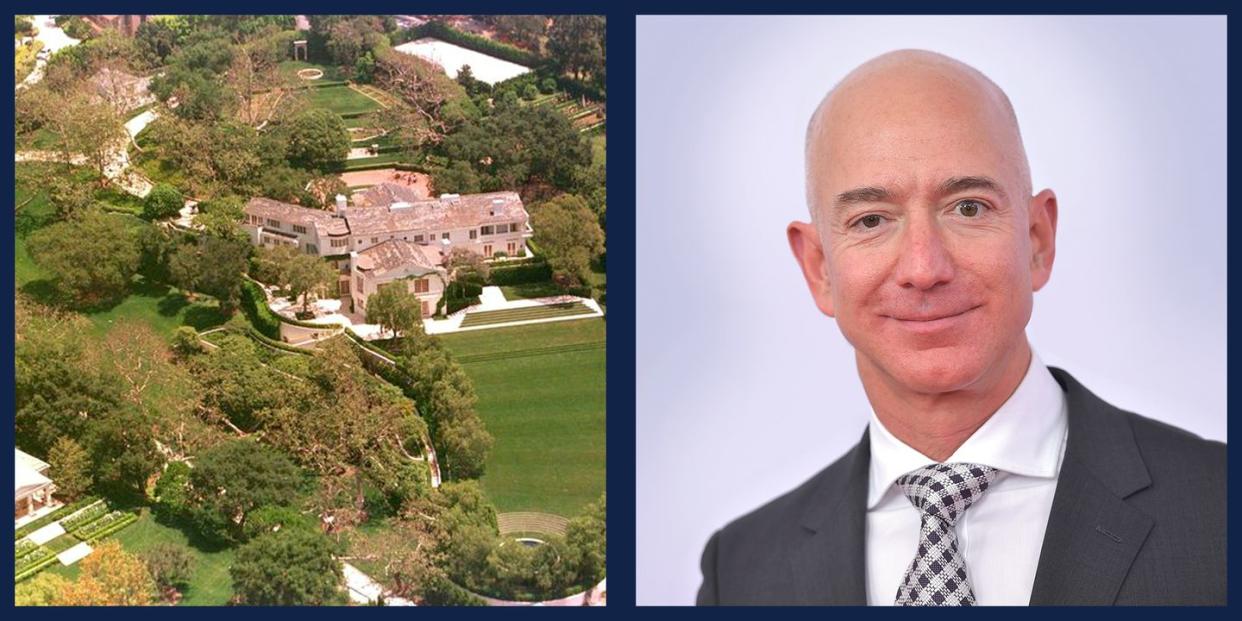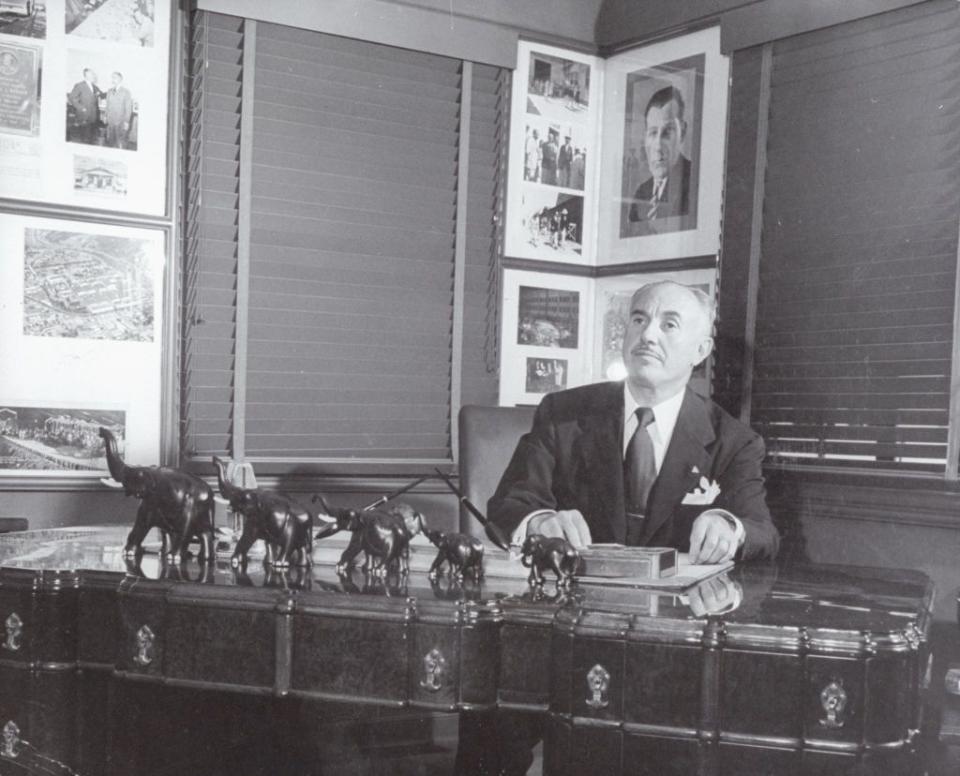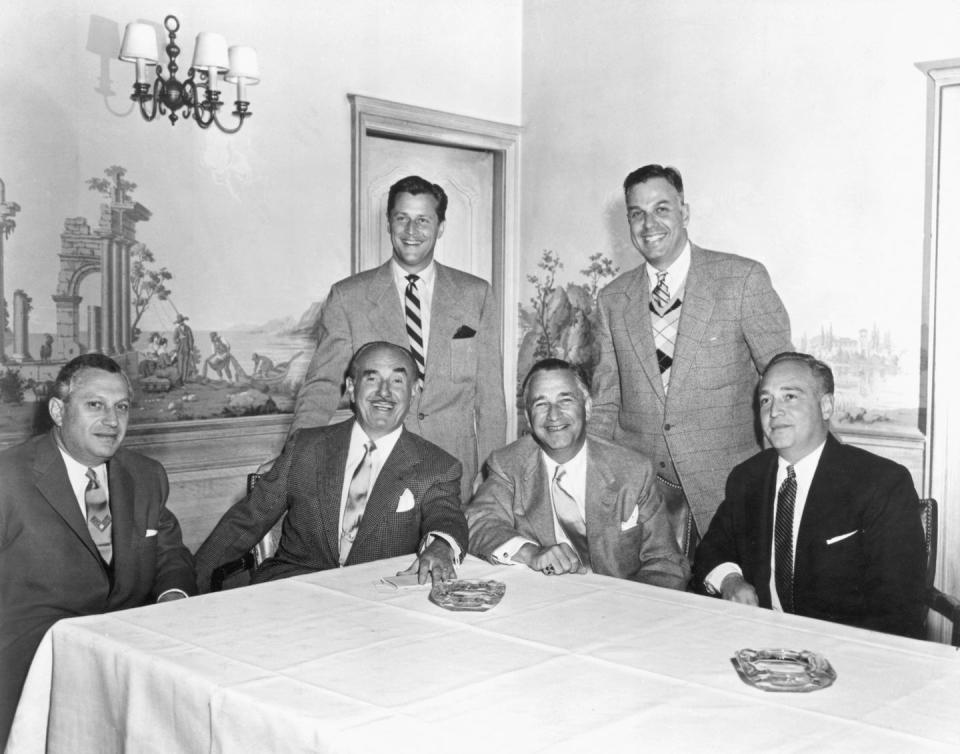Inside the Secret History of Jeff Bezos's New Mansion

When Jeff Bezos purchased a Hollywood estate from David Geffen yesterday for $165 million, he got 9 acres of prime Los Angeles real estate, an enormous 1936 Georgian-style mansion, and a whole lot of backstory. The home, which adds to Bezos's portfolio as the country's 25th largest landowner, was built in the 1930s by Jack Warner, the head of Warner Brothers Studios, who lived there until his death in 1978.

In her book West of Eden: An American Place, Jean Stein, an influential author and editor who died in 2017, spoke at length to Geffen and Warner’s children about the property.
It Started out as a Spanish Style House
According to Jack Warner Jr., his father purchased the land after the success of the first “talkie,” 1927’s The Jazz Singer. “He built this oppressive Spanish house—what we used to call the Spanish clunker—but a gorgeous one,” he told Stein. “The studio did the interior design. They must have had a lot of old Spanish furniture they wanted to get rid of, ugly and uncomfortable.”
Warner’s Second Wife Hated It
Stein quoted Barbara Warner Howard, Jack Warner Sr.’s daughter with his second wife, Ann Page Warner. “Mother was always after him, saying, “Let me just change a few things,” but he kept saying no. Then one day Father came home and found that she had arranged through someone at the studio to have a bulldozer tear down the façade of the house.”
She Had a Better Idea...
“She was very taken with Monticello and went to study it before they built,” Howard told Stein. “With some help from the Hollywood decorator Billy Haines, the house became the Southern antebellum mansion of her dreams.”
Hopefully Somebody Has Redone the Heating System
Jack Warner Jr. lived in the house before his mother Irma Warner and Jack Sr. spilt. There was one feature in the house that I’ve always been sorry about,” Warner Jr. told Stein. “It had a central-heating system with big vents, and if my parents had a battle at the other end of the house—because she’d found out that he wasn’t at the studio that night—I’d hear the whole damn thing coming through the vent.”

Is the Bomb Shelter Still There?
“During the war, our bomb shelter was behind the projection room,” Howard told Stein. “It must have had at least twelve bunk beds, because you couldn’t let the servants die—they were hard to find during the war. My father was terribly patriotic, and he was a lieutenant colonel in the air force."
At First Geffen Wasn’t Interested
Barbara Warner Howard told Stein that David Geffen came to look at the house 10 days after her mother died. “But David said, ‘I could never live here. What would I do in a place like this?’”
Then He Brought Spielberg to Take a Look
“He showed the house to friends: Steven Spielberg and so forth,” Howard told Stein. “In the office, there was a collection of original leather-bound scripts embossed with ‘From the Library of Ann and Jack Warner.’ Spielberg saw one that dated from around the time he’d first come to Hollywood: Rebel Without a Cause or East of Eden. And he said, 'Do you think I could touch it?' They were like children in a candy store. Escrow on the house closed just six weeks after Mother’s death. It was so fast, but David kept saying, ‘Why can’t this go faster?’"
Architectural Digest toured the Warner Estate in 1992. Click here to see photos.
You Might Also Like

